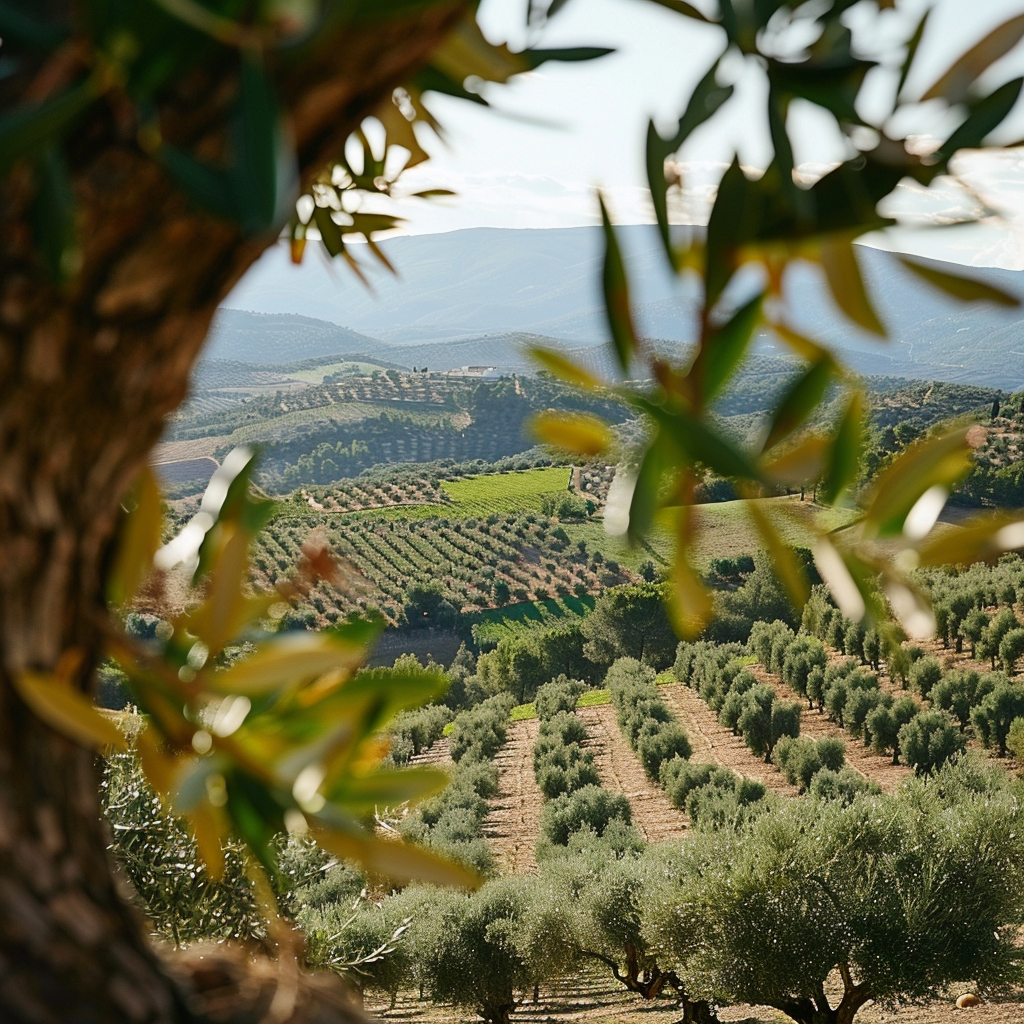Spain is one of the leading producers of olive oil in the world, and the influence of climate and soil on the quality of the country’s products is undeniable. Understanding the history of olive oil production in Spain is key to understanding how the industry has developed and influenced the country’s culture and economy.
History of olive oil production in Spain
The history of olive oil production in Spain is closely connected with the ancient era. Already more than two thousand years ago, olive oil played a significant role in the culture and economy of the region. The Phoenicians and Greeks contributed to the development of olive oil production in the Iberian Peninsula, and the Romans improved olive processing and storage techniques, increasing production and distribution of the oil.
Over time, olive oil production in Spain has become one of the key sectors of the economy.During the Middle Ages, it acquired particular importance in the southern regions of the country, such as Andalusia and Extremadura, where favorable climatic conditions and fertile soils allowed olive groves to flourish.
In the 16th century, Spanish olive oil became a sought-after commodity on the international market, making oil production even more widespread and intensive.This period was also characterized by improvements in production technology, including the use of hydraulic presses, which increased the yield of oil from olives.
The history of olive oil production in Spain is a story of hard work and dedication that has had a huge impact on the country’s culture and economy.
Climatic conditions in Spain and their impact on olive oil production
Spain is characterized by a variety of climatic conditions, from Mediterranean in the south to continental in the north. This varied climate has a significant impact on olive oil production, determining the yield and quality of the oil in different regions.
In southern regions such as Andalusia, where the climate is Mediterranean, with mild winters and hot, dry summers, conditions are ideal for growing olive trees.Warm winters allow olive trees to survive the winter well, and high summer temperatures contribute to good ripening of the fruit. These conditions contribute to high yields and oil quality.
In northern regions such as Castile-La Mancha and Extremadura, where the climate is continental with hot summers and cold winters, olive oil production is also possible thanks to modern methods and technologies that help combat adverse weather conditions.
Features of soil cover and their importance for the quality of olive oil
The soil cover in Spain is also varied and affects the quality of the olive oil.In the southern regions, where red and brown soils rich in minerals are common, olive trees find favorable conditions for growth and development. These soils provide sufficient nutrients for the plants and promote the production of high quality oil.
In northern regions such as Castile-La Mancha, where the soils are more carbonate and less fertile, olive oil production may be less intensive. However, modern methods of fertilization and soil cultivation make it possible to compensate for the lack of nutrients and achieve good results in oil quality.
Thus, both climatic conditions and soil cover play an important role in the production of olive oil in Spain, determining its quality and unique characteristics in different regions of the country.
Regional differences in olive oil production in Spain
- Andalusia: It is the largest olive oil producing region in Spain. Spanish olive oil is often associated with the region due to its high quality and unique flavors. In Andalusia the predominant varieties are Pical, Arbequina and Picual. Oils from this region are often characterized by a fruity flavor and a slight bitterness.
- Castile-La Mancha: This region, located in the center of the country, is also a major producer of olive oil. The varieties used here are Cornacina and Pical. Olive oil from Castile-La Mancha often has a milder flavor with hints of herbs and almonds.
- Extremadura: Located in western Spain, Extremadura is also known for its olive groves. Varieties such as Manzanilla and Arbequina predominate here. Oils from this region have a rich fruity taste and bitterness.
- Catalonia: This region, located in the northeast of the country, is known for its traditional olive oil production methods. Varieties such as Arbosan and Morranel are often used for oil production in this region. Oils from Catalonia typically have a complex flavor with herbal notes and a slight bitterness.
Trends and challenges in olive oil production in modern Spain
- Sustainable production: Modern olive oil producers in Spain are increasingly paying attention to sustainable agriculture, introducing practices that minimize negative impacts on the environment.
- Innovation in technology: Spanish olive oil producers are actively introducing new technologies into their production processes to improve product quality and efficiency.
- Global consumption trends: Spain monitors global trends in olive oil consumption and adapts its production in accordance with the changing taste preferences of consumers.
- Challenges of climate change: Climate change poses a major challenge to olive oil production in Spain, requiring adaptation of varieties, growing methods and production technologies.
Spain plays an important role in the world’s olive oil production and its cultural heritage is closely linked to this product. The influence of climate and soil on olive oil production in Spain is undeniable, and the variety of regional characteristics creates a variety of flavors and aromas in the oils produced in different parts of the country. Olive oil is not only a key element of Spanish cooking, but also part of the national heritage, reflecting Spain’s rich history and cultural diversity.
The largest producers of olive oil in Spain are Andalusia, Castile-La Mancha, Extremadura and Catalonia.
The Mediterranean climate, characterized by mild winters and hot summers, has the greatest influence on olive oil production in Spain, providing ideal conditions for olive tree growth and fruit ripening.

